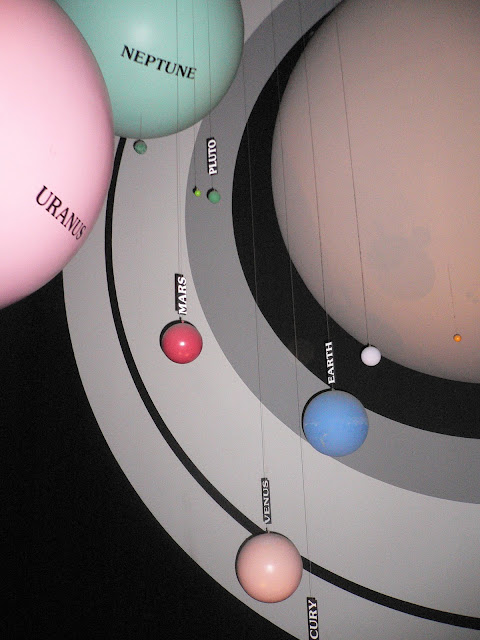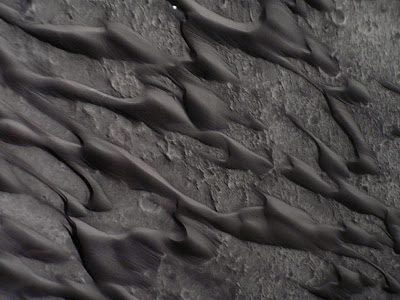Yesterday I traveled to the
Smithsonian National Air and Space Museum. This museum deserves hours of your time. I loved and hated the people: the crowds were overwhelming yet I relished in hearing adults and children shout about what they were learning. In addition, I walked away with a more informed viewpoint in Pluto.
As I meandered through the main entrance, I gaped at the large shiny objects hanging from the ceiling, most of which were replicas of things that have been in space. Did you catch that? MOST of those were replicas. A FEW of them had actually been in space! Ok, maybe it was just one but still! The most surprising shiny metal thing was Sputnik. It was tiny and looked incredibly low-tech.
From the atrium I traveled to the farthest corner to attempt only a quarter of the exhibits. I feasted my eyes on the stunning photos in their exhibit
Beyond: Visions of Our Solar System, and I got a piece of gum stuck to my shoe looking at
Amelia Earhart's flying jacket.
I finally came to an exhibit where I could spend sometime:
Exploring the Planets. Here I heard people of all ages speaking many languages and raving about the facts provided. Of course, the reason I walked into the exhibit was because I spotted a list of the planets and the area hiding Pluto was mildly conspicuous. I HAD to see how they managed this.
I was in college when Pluto was demoted, and I was a member of the Facebook group
When I was your age, Pluto was a planet. Like most of my peers, I was saddened and confused to have SCIENCE change like that. As a child there were certain absolutes: Roy G. Biv, Please Excuse My Dear Aunt Sally, and My Very Excellent Mother Just Served Us Nine Pizzas. WHAT IS MY EXCELLENT MOM GOING TO SERVE US NOW?!
As I now understand it, there are three criteria a mass my meet to be defined as a planet.
1. It is a celestial body that orbits the Sun.
2. It is a massive enough that its own gravity causes it to form in a spherical shape.
3. It has cleared the neighborhood around its orbit.
Pluto does not contain enough mass to clear the region of other objects, making it a dwarf planet. Let me challenge my readers to free their mind to change.
Free your mind, and the rest will follow. (Ok um, thanks En Vogue) This reorganization opens the opportunities for more dwarf planets to be added and potentially another mnemonic to help children identify them! On the other hand, you could recognize that kids these days will have less planets to remember. Now they can say: My Very Excellent Mother Just Served Us Nectarines. Nuts. Noodles. Nougat. NACHOS.
Seriously, though. I believe it is time to accept that science changes our perspective. It always has. It always should. Otherwise, we'd be navigating a flat planet.
As a credit to my peers, I also believe this move on the part of the scientists was a PR disaster (See:
How I Killed Pluto and Why It Had It Coming) and asking people to just accept change is almost inconceivable (I'm the type of person who has meticulous rules for PB&J making, so it wasn't easy to agree to this planet adjustment).
I come to this final plea: Inform yourselves before creating an opinion
regarding a science issue. Sure, it's easy to assume you'll despise the new season of (insert name of awful reality TV show) when you've hated every other season. Science conclusions involve more work on the front end from scientists and thus deserves more from those who have an opinion.







